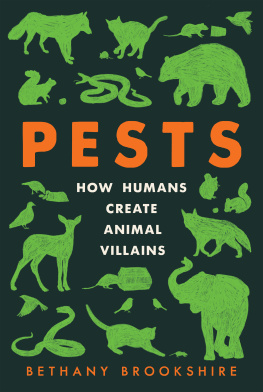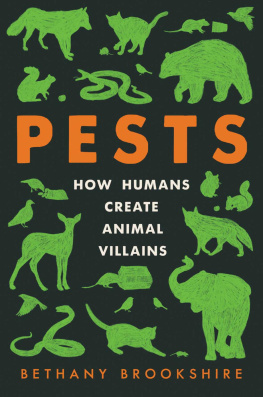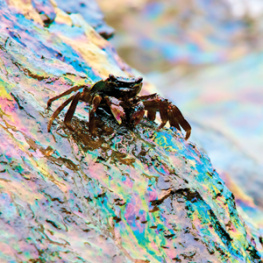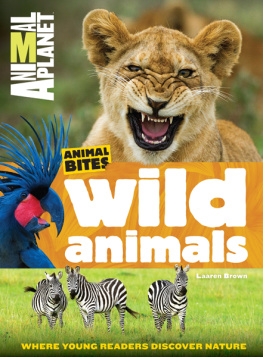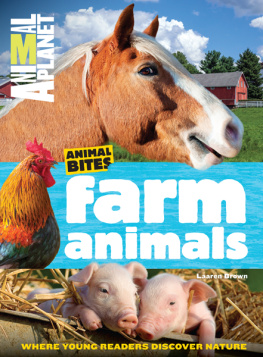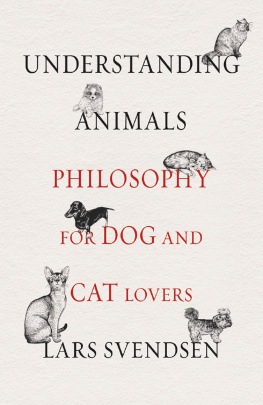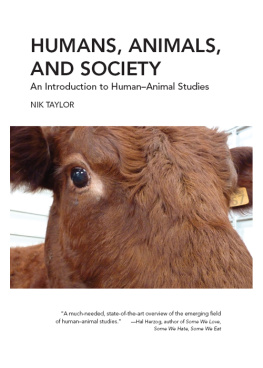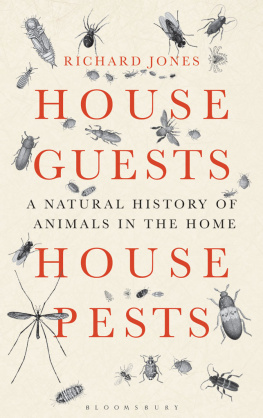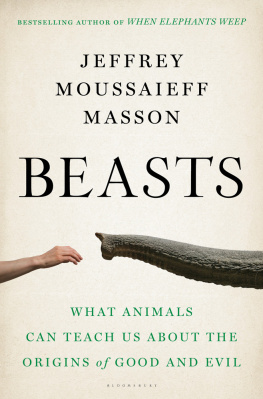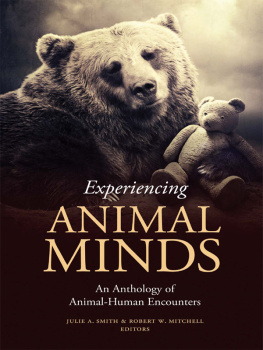C onsider the squirrel.
Many people love squirrels. People cheer for them and smile as their compact, fluffy bodies race over trees and power lines. Every college campus is convinced their squirrels are bolder than any others. Ive got a friend who posts a squirrel picture to Twitter every single day, without fail. Squirrels are symbols of fluffy, chipper, charming wildlife come to grace our suburban and urban lives.
Then theres me. Me and F***ing Kevin.
F***ing Kevin is an Eastern gray squirrel (Sciurus carolinensis). We call him Kevin for short. He lives in a graceful maple in front of my house. Hes a fine, chubby figure of a squirrel. His especially busy tail flicks forward over his back as he trots confidently around my property.
Kevin is my mortal enemy.
This squirrel is the reason I havent had a tomato from my struggling little garden for at least five years.
Im a poor gardener at best. But every time the weather warms, optimism kicks in, and I try again. In years past, I would line big pots up on the back porch and plant seedlings with desperate hope. Ive tried most of the usual suspectsbasil, zucchini, peppers. But theres a special place in my heart for tomatoes. I have memories from childhood of standing in the middle of my moms tiny, somewhat dry garden plot in the heat of late July, sneaking cherry tomatoes off the vine and popping them in my mouth. They burst joyfully on my tongue. They were sun warmed and intensely flavorful. The best health food Id ever tasted.
Every spring, I set out to recapture that perfect experience. I sally forth with hope and plant my tomato seedlings.
Every summer, I am doomed to fail. Because of F***ing Kevin.
Theres definitely more than one of him, to be fair. Kevins probably the godfather of a squirrel mafia. Maybe hes like Batman, with different squirrels donning the mask at different times. To me, though, theyre all Kevin.
He owns my yard. He chitters bossily at me from his tree and makes little threatening rushes at me on the sidewalk. But his biggest crimes occur when my precious tomatoes emerge. They swell up, hopeful and green. Every year I look at them and cross my fingers. Just a few more sunny days and those lovely little beauties will be mine. I start planning menus of caprese salad, ratatouille, and salsa.
And every year, Kevin strikes. He selects a nice, plump green tomato and takes a big bite. Suddenly, Kevin recalls that he does not, in fact, like tomatoes. He leaves the perfect green sphere with its tragic tooth marks to rotmaking sure to leave it right where I can see it.
Then he does it again. And again. Its an aggressive show of constant optimism. Every evening, it seems, Kevin tries out a new tomato, then remembers that tomatoes suck. He leaves his victims for me to find as a clear sign of his superiority. For five years running, Kevin has taken a bite out of every single tomato in my garden and stuck me with store-bought salsa.
Ive tried a lot of things to get rid of Kevin. I put chicken wire around my plants, but squirrel paws (and cherry tomatoes) are smaller than typical chicken wire holes. I sprayed the growing tomatoes with a cayenne-pepper solution to burn his little mouth. He waited, then chowed down after a late summer rainstorm washed it away. I started feeding feral cats on the back porch, thinking a predator or three would keep him at bay. The cats became tame. Two came inside and became our new pets. Kevin added cat food to his diet.
One year I tried the nuclear option. I planted no tomatoes. Instead, I filled pots and cups with jalapeo pepper seeds, hoping Kevin would fall for my devious trick. I fantasized about his squeak of spiced dismay. I pictured a speedy squirrel retreat and the tears running down his furry cheeks (squirrels cant weep, but I can dream).
He never even tasted one. Neither did I. It turns out Im such a bad gardener I cant even keep a jalapeo pepper alive.
Many of my friends have heard the story of F***ing Kevin. Neighbors know about him; we now call every squirrel in the neighborhood by his name. Most people think its a silly story of my own incompetence and a squirrels resourcefulness.
Its also the story of a pest. To other people, Kevin is a simple squirrel, perhaps a little smarter than your average rodent. Hes cute, fluffy, possibly even sweet.
To me, Kevin is a constant headache. He makes me feel powerless and foolish. What kind of sciency person, what kind of adult must I be that I cant keep a squirrel away from my tomatoes? Every dead green orb seems to judge me, a silly suburbanite who cant keep a garden alive. And its all because of F**king Kevin.
I have looked up the average life span of an adult squirrel (six years, give or take two or three), and every year I cross my fingers that this is his last. Maybe this spring hell come down with mange. Maybe hell eat himself to death on my tomatoes. Or maybe Ill break and buy a BB gun.
Kevin is evidence of my inability to control my environment. When we are observing squirrels through the safety of our camera lens, when we have nothing they want, they are adorable wildlife. When they have the temerity to nest in our chimneys, move into our attics without paying rent, or use our gardens as an all-you-can-eat buffet, its another story.
Squirrel intrusions into our lives are also indicators of animal success. Species of squirrel hang out on every continent except Antarctica (a group of squirrels, by the way, is called a scurry or a dray). From an original diet of nuts and seeds, theyve expanded to French fries and bacon. Theyre one of the few mammals on the planet that can go down a vertical surface headfirst. Most are scatter hoardersburying caches of food for the lean times in winter. They have highly accurate spatial memories and can pinpoint exactly where they left precious nuts months after hiding them. I have to have someone call my phone at least once a week because I cant remember where I left it.
I admit it. Im impressed.
Urban charmer or suburban menace? Squirrels are both. Their status doesnt depend on their behavior. Theyre just trying to live their best squirrel lives. Instead, whether a squirrel is cute or a curse depends on how we see them.
In some placessuch as in Scotlandsquirrels have gone from persecuted pest to a source of national pride. There, the red squirrel (Sciurus vulgaris) is native to the woods and glens. The scientific name might be vulgaris, meaning common, but it doesnt look it. The red squirrels tufted ears, white tummy, and fluffy tail inspired Beatrix Potters The Tale of Squirrel Nutkin and provided the pattern for thousands of stuffed squirrel toys the world over.
The red squirrels history in Scotland has been filled with ups and downs, says Matthew Holmes. A historian of science at the University of Cambridge in England, Holmes has tracked the history of human opinion on animals such as squirrels and sparrows. At first, he explains, forests werent primarily seen as habitat. People didnt view a forest as a place where things lived, unless they wanted to hunt those things. Instead, forests were trees, and trees were wood to be used in shipbuilding, fires, and more. But as people cut down the local forests, the things in them ran out of places to call home. The red squirrel, which spends most of its time in the trees, began to disappear. By the end of the eighteenth century, no fluffy red tails were to be seen in most of Scotland.
The squirrel was saved in Scotland not by conservationists, but by aristocratic fashion. Around 1778, Elizabeth Scott, Duchess of Buccleuch, saw some red squirrels on her English lands and decided that she had to have them back in Scotland. She wasnt alone. Other aristocrats felt the samethe squirrels went well with the artfully disheveled deer parks they were building on their estates. The lords and ladies werent necessarily inspired by a charitable sense of conservationthat idea didnt really exist yet. The aristocrats just liked the look of the landscapingand the money it could bring in from hunting tourism in their new parks. As rich people were more and more able to separate themselves from the worst the wild could send, it became much easier to appreciate its beauty. They brought back squirrels and their habitat in their new enthusiasm for nature.

